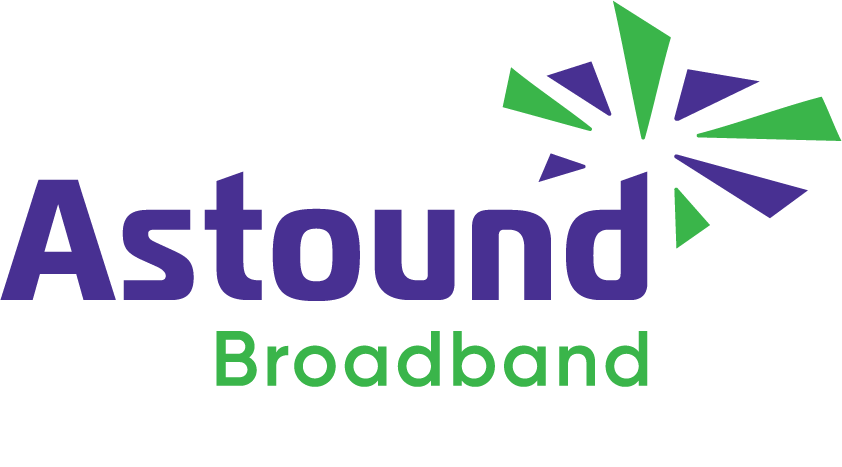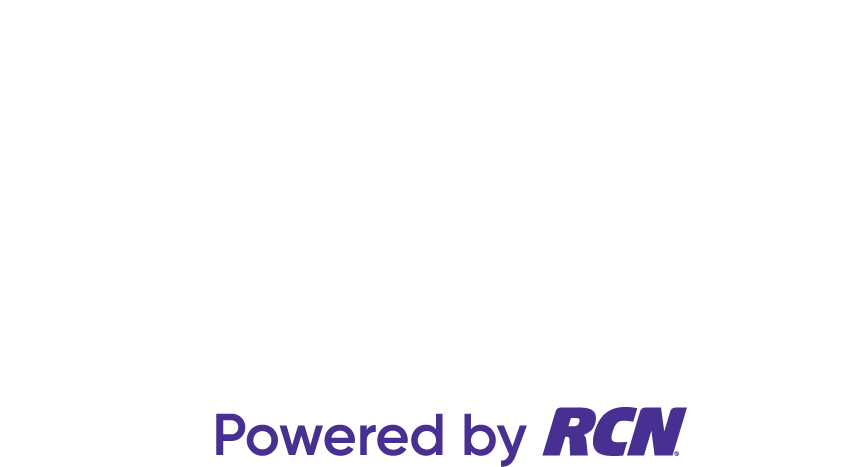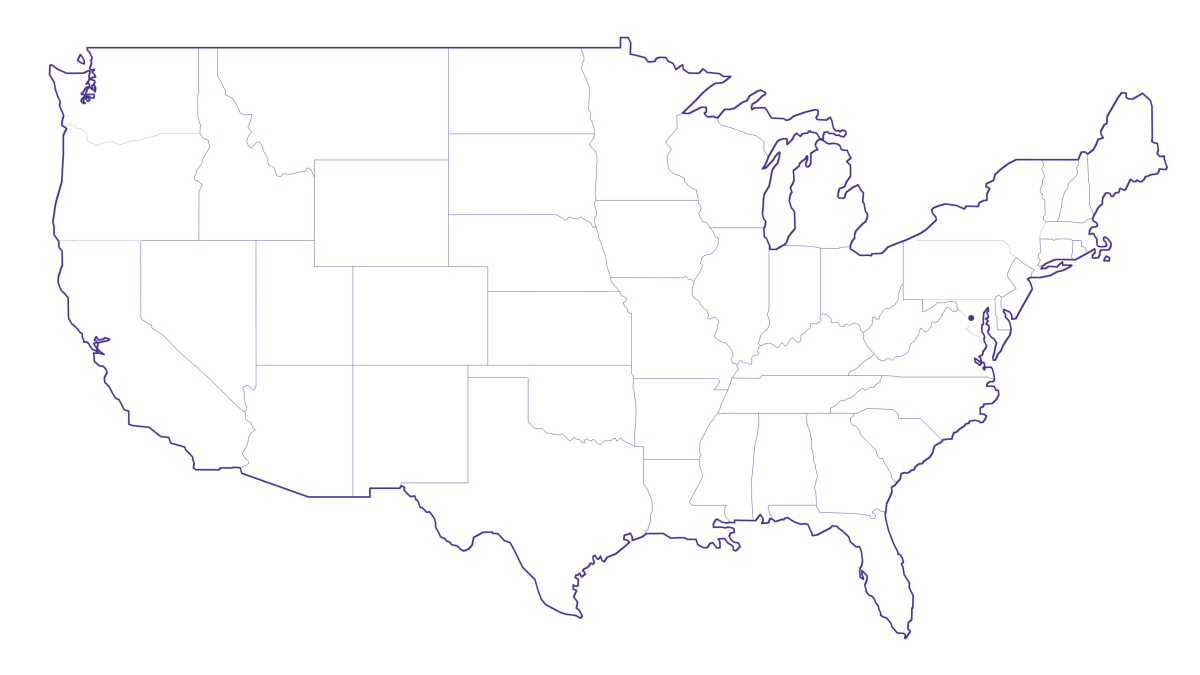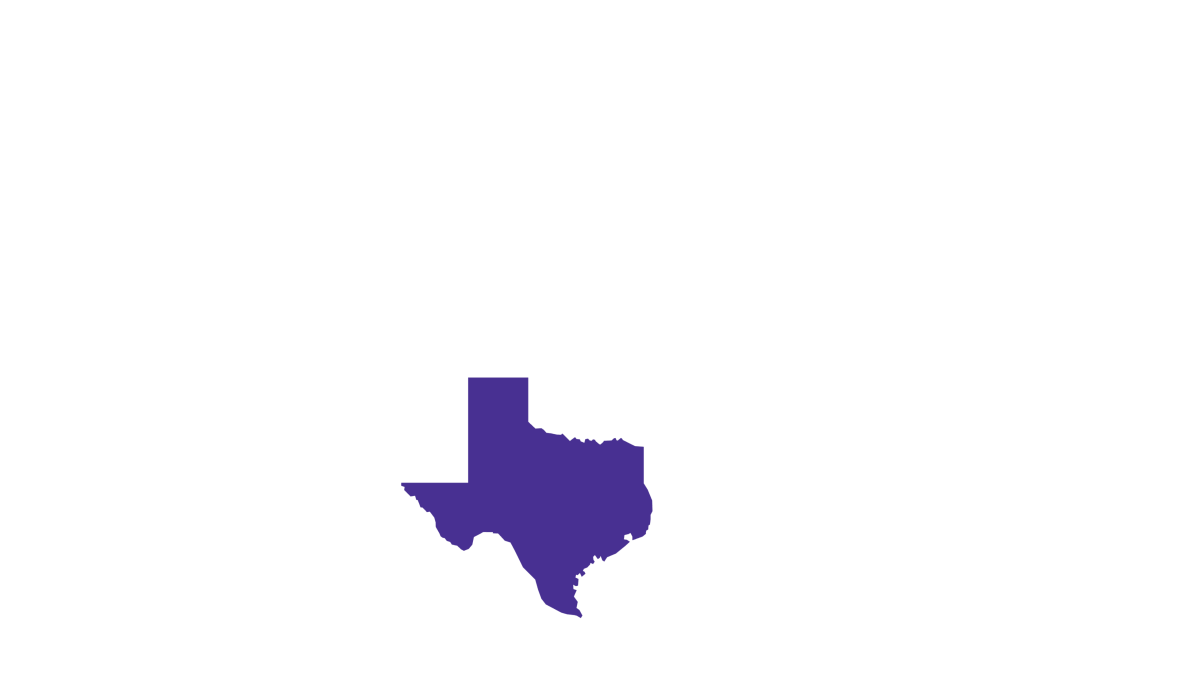Fiber optic vs. cable internet: Differences explained

The primary difference between fiber optic and cable internet is the transmission medium used for data transmission. Fiber internet uses optical fiber cables made of ultra-thin glass fibers that transmit data as pulses of laser light. In contrast, cable internet uses copper wires (coaxial cables) and electric signals to send data.
What is cable internet?
Cable internet transmits data via coaxial cables, the same technology that cable television companies use.
This broadband technology, which has proven to be effective for television companies, allows for broad coverage of cable internet services due to the extensive network of coaxial cable infrastructure.
However, this method of data communication is vulnerable to network congestion, frequency interference by other electronic devices, attenuation (the loss of signal strength in networking cables or connections over long distances) and damage from unfavorable weather events. Because the cables transmit data via electrical signals, performance may vary depending on the distance from the source and the quality of the wires.
Comparatively, cable internet offers asymmetric speeds, with faster download speeds than upload speeds. This setup prioritizes the needs of typical internet users, as they tend to download more data (streaming media, downloading images and surfing the web) than upload data (sending emails, uploading photos or making video calls), requiring higher download speeds.
Fiber-powered internet
Why Fiber Internet works better
Astound’s fiber-powered internet provides consistent speeds throughout the day versus 5G Home Internet which is prone to intermittency.
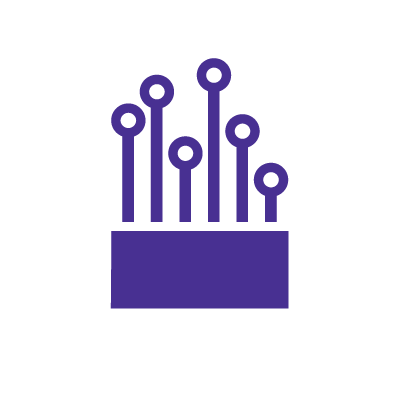
What is fiber internet?
Fiber internet uses fiber optic cables that transmit data faster as light pulses instead of electric signals. The technology uses ultra-thin glass strands as the transmission medium, which are more efficient for transmitting data as they are less susceptible than cable internet to signal interference due to temperature changes, contact with water, unfavorable weather events or long distances.
Fiber internet offers significantly faster upload and download speeds than other internet technologies, making it ideal for bandwidth-heavy tasks. With its high speed performance, users can seamlessly stream high quality video and audio, download/upload large data files and engage in data-intensive activities like online gaming, remote work and video conferencing.
Many fiber internet providers use full-duplex transmission, which allows data to travel in both directions simultaneously, further enhancing speed, bandwidth capacity, efficiency and overall performance.
Fiber vs. cable comparison
While fiber optic and cable internet both deliver high speed broadband access, it’s essential to understand the key differences between these two popular types of internet that impact your internet performance, installation process and overall experience. Let’s break down the key differences to help you make an informed decision when choosing an internet service.
Fiber internet vs. cable internet
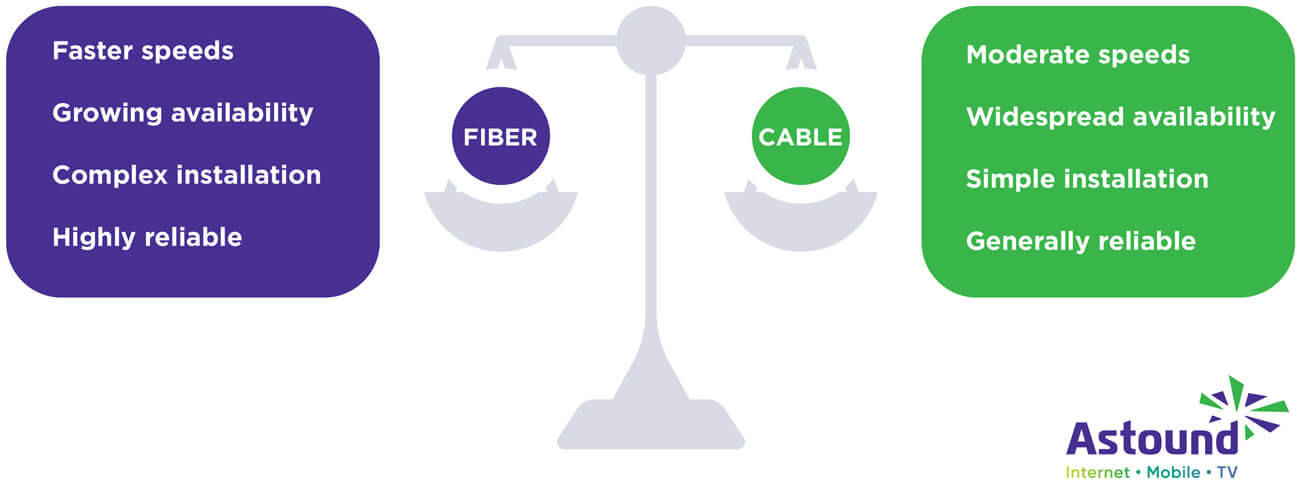
Speeds
Cable internet offers download speeds ranging from 100 Mbps to 1.5 Gig, but upload speeds are typically lower, ranging from 20 to 100 Mbps, due to its asymmetric structure. While these download speeds support various online activities, the slower upload speeds may limit upload-heavy tasks like large file backups or video calls during remote work.
Comparatively, fiber optic internet stands out because of its exceedingly fast speeds, high bandwidth and low latency. It provides faster upload and download speeds, with some providers, such as Astound, offering speeds up to 5 Gig in some areas. Some fiber internet plans even provide symmetrical speeds, with equal upload and download speeds, which is advantageous for data and bandwidth-intensive activities like online gaming, video conferencing and large data transfers.
Availability
The availability of fiber and cable internet largely varies depending on location. Cable internet relies on existing coaxial infrastructure used for cable television, providing widespread availability in urban and suburban areas.
Fiber internet access, however, is primarily available in urban areas and is rapidly expanding its coverage to cover more neighborhoods and areas.
According to the 2025 Report Card for America’s Infrastructure by the American Society of Civil Engineers (ASCE), 82% of U.S. households have access to cable internet, while 46% of U.S. households have access to fiber internet. The report also highlights that despite the high availability of internet access, rural and remote regions face a broadband access gap, with 28% of rural Americans lacking access to high speed broadband internet.
FIBER-POWERED GIG INTERNET
Gig+ speeds, unbeatable value
Get Gig speeds up to 1500* Mbps starting at $70/mo on Astound’s ultra-reliable fiber-powered‡ network.

Installation
Cable internet installation is straightforward and user-friendly, especially if you have a cable TV connection. Many cable internet providers provide self-installation kits, which contain instructions for connecting the cable modem or a modem/wireless router combo to the existing cable outlet in the house. You then have to activate the service through the provider’s app or web portal.
On the other hand, fiber internet installation is more complex and generally requires professionals. It involves the installation of fiber optic cables directly to the home (known as FTTH), which includes specialized equipment and expertise.
Some ISPs provide free fiber installation, especially if your home already has a fiber terminal onsite. However, other ISPs can charge between $50 and $100, depending on the complexity of the installation.
Reliability
The fiber optic cables transmit data as light pulses, resulting in minimal latency and less signal interference from electromagnetic interference and harsh environmental factors. Fiber internet can also maintain signal integrity over long distances, as the signals experience minimum attenuation and distortion.
In addition, fiber infrastructure is more resilient and less prone to physical damage and outages than cable. Its reliability and lower latency provide stable connections and faster response times for real-time applications, even during network congestion or severe weather.
In comparison, cable internet transmits data via electricity through copper coaxial cables, which are more susceptible to interference from nearby electronic devices or radio frequencies. The interference can disrupt data transmission, leading to higher latency levels and potential service interruptions.
eero Plus
eero Plus protects your family online with a password manager to safely create, store and share passwords, virus and malware protection and a VPN that lets you browse the web safely and securely.
Cable internet systems also use shared internet infrastructure, where multiple users in the same location use the same physical cable connection and bandwidth, which makes it vulnerable to bandwidth slowdowns during peak usage periods. For example, one Reddit user shares how they experience network slowdown at random times of the day, making online activities frustratingly inconsistent.
Fiber internet vs. cable internet comparison
A side-by-side look in the chart below shows the key differences between fiber optic internet and cable internet.
| Category |
Fiber Optic Internet |
Cable Internet |
|---|---|---|
| Speed | Fast speeds up to 5 Gbps in some areas. Also supports symmetrical upload and download speeds. | Download speeds from 100 Mbps to 1.5 Gbps. Offers asymmetric speeds with slower uploads (typically 20–100 Mbps). |
| Latency | Low latency due to light-based data transmission, making it excellent for real-time applications like gaming and video calls. | Higher latency than fiber, caused by electrical signal interference and network congestion. |
| Availability | Primarily available in urban areas. Coverage is steadily expanding across more neighborhoods. | Widely available in both urban and suburban areas, thanks to existing cable TV infrastructure. |
| Installation | Typically requires professional installation and specialized equipment (FTTH setup). Installation may be free or cost between $50 and $100, depending on the ISP. | Simple and user-friendly setup. Many ISPs provide self-installation kits with a modem or modem/router combo. |
| Reliability | Highly resilient. Resistant to electromagnetic interference, severe weather and congestion. Maintains signal quality over long distances. | More prone to interference, service interruptions, and slowdowns during peak usage due to shared bandwidth. |
| Technology | Uses ultra-thin glass fiber to transmit data as light pulses at near-light speed. | Uses copper coaxial cables to transmit data as electrical signals. |
|
Category
Speed |
Fiber Optic Internet
Fast speeds up to 5 Gbps in some areas. Also supports symmetrical upload and download speeds. |
Cable Internet
Download speeds from 100 Mbps to 1.5 Gbps. Offers asymmetric speeds with slower uploads (typically 20–100 Mbps). |
|
Category
Latency |
Fiber Optic Internet
Low latency due to light-based data transmission, making it excellent for real-time applications like gaming and video calls. |
Cable Internet
Higher latency than fiber, caused by electrical signal interference and network congestion. |
|
Category
Availability |
Fiber Optic Internet
Primarily available in urban areas. Coverage is steadily expanding across more neighborhoods. |
Cable Internet
Widely available in both urban and suburban areas, thanks to existing cable TV infrastructure. |
|
Category
Installation |
Fiber Optic Internet
Typically requires professional installation and specialized equipment (FTTH setup). Installation may be free or cost between $50 and $100, depending on the ISP. |
Cable Internet
Simple and user-friendly setup. Many ISPs provide self-installation kits with a modem or modem/router combo. |
|
Category
Reliability |
Fiber Optic Internet
Highly resilient. Resistant to electromagnetic interference, severe weather and congestion. Maintains signal quality over long distances. |
Cable Internet
More prone to interference, service interruptions, and slowdowns during peak usage due to shared bandwidth. |
|
Category
Technology |
Fiber Optic Internet
Uses ultra-thin glass fiber to transmit data as light pulses at near-light speed. |
Cable Internet
Uses copper coaxial cables to transmit data as electrical signals. |
How do other types of internet compare?
There are three other common types of broadband technologies besides fiber and cable. These include DSL, satellite and 5G home internet. Let’s look at how these internet technologies compare to fiber and cable.
5G home internet
5G home internet is a type of fixed wireless broadband that can deliver speeds up to 300 Mbps. However, real-world performance varies due to factors such as network traffic congestion, proximity to 5G towers, physical obstacles and signal quality. These conditions can cause delays and interference during data transmission, making your internet slower. In contrast, a wired internet connection, like cable or fiber, has an infrastructure that provides consistent performance.
Most 5G home internet plans start from $55, which may include carrier discounts. However, many plans come with data caps, which, if exceeded, may cause the provider to throttle your speeds and charge you more for a faster connection.
Most 5G internet providers offer self-installation kits that include a quickstart guide, a 5G router, an antenna and a 5G SIM card. You also need the carrier’s app or web portal for activation and configuration.
Despite the rollout of 5G networks, 5G home internet coverage is limited to urban and metropolitan areas, as its infrastructure expansion is ongoing. It remains largely unavailable in rural areas.
Find your speed
What speed do you need?
Maybe you just need the essentials—or maybe you need to unleash the ultimate internet speed. Explore your options to get the best experience for every device in your home.

DSL
Digital Subscriber Line (DSL) is an internet technology that uses copper telephone lines to transmit data and traffic. While DSL provides speeds comparable to cable internet, it lacks the symmetrical or Gigabit speeds offered by fiber internet. DSL download speeds range from 1 Mbps to 7 Mbps, while the average upload speed is 1.5 Mbps.
DSL is widely accessible in urban and rural regions as it leverages the existing telephone infrastructure. Nonetheless, its speeds vary based on the distance between the user’s location and the central office, with users farther away from the central office experiencing slower speeds.
DSL internet can be self-installed by the user using their existing telephone wiring. It typically entails connecting a DSL modem to existing phone lines.
Satellite internet
Satellite internet is a good alternative for internet access in remote or rural areas, where other high speed internet options like fiber, cable, 5G home internet and DSL are unavailable. It uses orbiting satellites to deliver a connection to a satellite dish in your home, bypassing the need for wiring or fixed wireless infrastructure.
Satellite internet is slower than fiber and cable, with speeds ranging from 25 Mbps to 150 Mbps. While satellite internet speeds have increased over time, they can be affected by factors like adverse weather conditions, higher latency and data caps imposed by the service providers.
Satellite internet plans are more expensive than fiber and cable options, with pricing ranging between $40 and $150 monthly, including data limits. When you exceed the limit, the internet providers charge overage fees, which increase overall monthly bills for users with high data usage compared to cable and fiber’s unlimited data allowances.
Furthermore, satellite installation requires specialized equipment like a satellite dish antenna, a gateway router and an optional amplifier. The Federal Communications Commission requires a professional satellite internet installation to meet particular guidelines regarding radiation exposure limits, follow environmental standards and help maintain telecommunications safety requirements. However, you can use your own wireless router instead of the provider’s gateway router to have a stronger WiFi signal in your home.
DSL vs. satellite vs. 5G Home Internet comparison
The chart below compares DSL, satellite and 5G home internet technologies, highlighting their key differences.
| Category | DSL | Satellite | 5G Home Internet |
|---|---|---|---|
| Technology Type | Wired (uses copper telephone lines) | Wireless (uses orbiting satellites) | Fixed Wireless (uses cellular 5G networks) |
| Speeds | 5–50 Mbps | 25–150 Mbps | Up to 300 Mbps |
| Latency | Moderate | High (due to long signal travel) | Moderate to high (varies by network conditions) |
| Data Caps | Often unlimited or generous data allowances | Common, with overage charges and throttled speeds after exceeding the limit. | Common, with overage charges and throttled speeds after exceeding the limit. |
| Installation | Self-installation via connecting the telephone jack and a DSL modem | Requires professional installation. Involves configuring the satellite dish, the gateway router and amplifier. | Self-installation with gateway router, antenna and SIM card. |
| Availability | Widespread in urban and rural areas | Unlike many other types of internet, satellite is available in rural and remote areas. | Available in urban or metropolitan areas. Limited rural access. |
|
Category
Technology Type |
DSL
Wired (uses copper telephone lines) |
Satellite
Wireless (uses orbiting satellites) |
5G Home Internet
Fixed Wireless (uses cellular 5G networks) |
|
Category
Speeds |
DSL
5–50 Mbps |
Satellite
25–150 Mbps |
5G Home Internet
Up to 300 Mbps |
|
Category
Latency |
DSL
Moderate |
Satellite
High (due to long signal travel) |
5G Home Internet
Moderate to high (varies by network conditions) |
|
Category
Data Caps |
DSL
Often unlimited or generous data allowances |
Satellite
Common, with overage charges and throttled speeds after exceeding the limit. |
5G Home Internet
Common, with overage charges and throttled speeds after exceeding the limit. |
|
Category
Installation |
DSL
Self-installation via connecting the telephone jack and a DSL modem |
Satellite
Requires professional installation. Involves configuring the satellite dish, the gateway router and amplifier. |
5G Home Internet
Self-installation with gateway router, antenna and SIM card. |
|
Category
Availability |
DSL
Widespread in urban and rural areas |
Satellite
Unlike many other types of internet, satellite is available in rural and remote areas. |
5G Home Internet
Available in urban or metropolitan areas. Limited rural access. |
Astound ultra-fast internet gives everyone a better experience
Astound’s ultra-fast internet is powered by fiber optic technology, offering a wired internet connection that delivers consistent performance and less vulnerability to interference than a wireless connection. The fiber-powered internet connection enables you to enjoy a seamless internet experience with faster speeds and a reliable connection, ideal for tasks like remote work, online gaming and 4K streaming.
Customers who choose Astound’s Gig plans also get eero Whole Home WiFi, which extends coverage and eliminates dead zones to ensure connectivity throughout your home. Households with multiple users engaging in data-intensive and bandwidth-heavy tasks can rely on the cutting-edge eero Max 7 router to handle Astound’s 5 Gig internet plan, thanks to its support for the latest WiFi 7 technology that delivers unmatched speeds, reliability and increased device capacity.
Astound also makes staying connected simple and more affordable by offering bundled packages combining internet, TV and mobile phone services. These bundles provide cost savings and convenience by consolidating different services under one bill.

Internet + Mobile
Check out our savings calculator to see the changes in your bill when you build a plan with Astound.
Conclusion
When comparing fiber vs. cable internet, the main differences lie in the data transmission medium, speeds and reliability.
Fiber uses fiber optic cables to transmit data as light pulses, which results in minimal interference, increased reliability and fast symmetrical Gigabit+ speeds. Its performance makes it ideal for bandwidth-heavy activities like online gaming, streaming, smart home connectivity, video conferencing and cloud computing. Fiber is also future-ready, offering scalability to accommodate a growing demand for internet data across homes and businesses.
On the other hand, cable internet, while still a high speed option, transmits data as electric signals over coaxial cables. It provides asymmetric performance, with fast download speeds but often slower upload speeds. Cable connections are also more susceptible to interference and can experience traffic congestion, especially during peak hours, due to their shared bandwidth infrastructure.
Ultimately, the best internet option depends on your household’s online habits, the number of connected devices and the availability of service in your area.
With Astound, you can choose from a range of customizable fiber-powered internet plans. The plans enable you to enjoy fast speeds and reliable connectivity with Whole Home WiFi coverage and cost-saving bundling options that ensure a smooth internet experience for both work and entertainment.
Frequently asked questions
What is the main difference between fiber and cable internet?
The main difference between fiber and cable internet is the mode of data transmission. Fiber uses optical fiber cables that transmit data as light pulses, allowing for faster speeds and better reliability. Cable uses coaxial copper cables to transmit data as electric signals, which are more susceptible to interference.
Is it worth it to switch from cable to fiber?
Yes, switching from cable to fiber is worth it, especially if you need faster upload speeds, lower ping rates and stable connections. Fiber also supports symmetrical speeds, making it ideal for bandwidth-intensive activities like file backups, online gaming and streaming. While cable also offers fast speeds and low ping rates, its asymmetrical nature provides slow upload speeds and can experience traffic congestion during peak usage.
What is the difference between symmetrical and asymmetrical speeds?
Symmetrical speeds mean that your download and upload speeds are equal, for example, 1 Gbps download and 1 Gbps upload, which is common with fiber internet.
Asymmetrical speeds mean that your download speeds are faster than upload speeds, like 1 Gbps download and 20 Mbps upload. This is common with cable, 5G home internet, DSL and satellite internet.
Asymmetrical setup prioritizes the needs of typical internet users, as they tend to download more data (streaming media, downloading images and surfing the web) rather than upload data (sending emails, uploading photos or making video calls).
Can I self-install cable or fiber internet?
Cable internet providers normally provide self-installation kits, which are easy to set up using a cable modem or a modem-router combo and a cable TV outlet. Fiber internet usually requires professional installation, especially if your home doesn’t already have a fiber terminal. Fiber internet providers may offer free installation or charge you depending on the complexity.
Which internet type is best for rural areas?
In rural areas where cable, fiber, or 5G home internet’s availability is limited, alternatives like DSL and satellite internet are more common. However, they come with trade-offs as DSL offers slow speeds while satellite is costlier and has high latency levels.
Create the perfect bundle
Get the speed, WiFi, mobile and TV that’s just right for you.
*Internet speeds vary, not guaranteed. Certain equipment may be required. See astound.com for details. Modem req’d. No contracts. Astound Internet is powered by fiber and connected to the premises via coaxial connection or fiber, where available. Delivery methods may vary by area. Subject to availability. Ltd-time offer; subj. to change without notice. Internet speeds under 1 Gig, pricing valid for 12 mos. Gig+ Internet speeds, pricing valid for 36 mos. Add’l fees apply for taxes, surcharges, & data overages, & are subj. to change. For details visit astound.com/fees. Enhanced WiFi or Whole Home WiFi included with Gig+; $5/mo for lower speeds or add’l devices. Regular rates apply after promo ends. Monthly price shown includes discount for enrolling in autopay & e-bill. $10 off/mo w/ bank acct autopay or $5 off/mo w/ credit/debit card autopay. Valid email & enrollment req’d. Must enroll w/in 30 days of order. Discount appears within 3 bill cycles, ends if autopay/e-bill is canceled, svcs change, or acct isn’t in good standing. ^Astound Mobile req’s Astound Internet service for activation. Max 5 lines. Equip., intl./roaming charges, taxes, fees extra & may change. Astound not liable for svc disruptions or outages. Higher rate applies if Internet not maintained. Mobile svc only in Astound areas. Pricing subj. to change. Data may slow during congestion. After 20GB, Unlimited plans slow to 768 Kbps; 1.5GB/3GB plans capped. No rollover; add’l data $10/GB. Coverage varies. Some features may require specific plans. Mobile svc includes BIAS w/ data, voice, texts & SMS. Other restrictions may apply. See astound.com/mobile for details. Offer valid for new res. customers or former customers in good standing w/out Astound svc in past 60 days. Add’l svcs, equip, premiums & tiers extra & subject to add’l charge & reg. increases. $14.99 one-time activation fee (plus install) applies & may change. Taxes & surcharges extra & subj. to change. WA RESIDENTS: unless otherwise specified, price does not include 2% Regulatory Administration Fee. Cust. responsible for any accrued charges. Subj. to credit check. Not all svcs/speeds avail. in all areas. 30-Day Money-Back Guarantee for new residential customers who cancel within 30 days of install. Maximum refund is equal to one month’s monthly recurring service fee of services & equip. ordered & installed. Refund within 60 days after conditions are satisfied. Refund not applicable to usage-based fees. All svcs are governed by Astound Customer Terms & Conditions found at astound.com/policies-disclaimers. © 2025 Radiate HoldCo, LLC d/b/a Astound Broadband. All rights reserved.
While we have made every attempt to ensure that the information contained in this site has been obtained from reliable sources, Astound is not responsible for any errors or omissions, or for the results obtained from the use of this information. All information in this site is provided “as is”, with no guarantee of completeness, accuracy, timeliness and without warranty of any kind, express or implied, including, but not limited to warranties of performance, merchantability and fitness for a particular purpose. Certain links in this site connect to other websites maintained by third parties over whom Astound has no control. Astound makes no representations as to the accuracy or any other aspect of information contained in other websites.
AT&T Internet Air, T-Mobile 5G home internet and Verizon 5G home internet details were pulled from their respective websites on December 5, 2023. *Internet speeds may vary & are not guaranteed. Certain equipment may be required to reach advertised speeds. Limited time offer, subject to change without notice. Advertised promotional pricing valid for 12 or 24 months from service start date, subject to change thereafter. Astound offers month-to-month service with base discounted introductory rate tiers. Prior to the end of any discounted rate tier, subscribers receive a notice informing them of the end of the discounted rate tier and providing information about the next discounted rate tier. Unless otherwise specified, 2-year price lock only available w/ promo internet pricing for speeds of 500 Mbps or greater. Additional fees apply for taxes and surcharges, and are subject to change. For details about fees & taxes visit astound.com/fees. Offer includes a monthly discount for enrollment in both automatic payments (autopay) & paperless billing (e-bill). Discount of $10 applies with automated bank account deduction or a discount of $5 applies with automated credit/debit card payment. Valid email address required. Must complete enrollment in autopay and e-bill within 30-days of placing the order. Without enrollment, the discount does not apply. Discount appears on bill within 3 bill cycles after enrolling. If either autopay or e-bill is canceled, services are changed, or the account is not in good standing, then the monthly discount will be discontinued.
**Source
eero Plus is available for an additional $9.99/month and requires subscription to whole home WiFi powered by eero.
